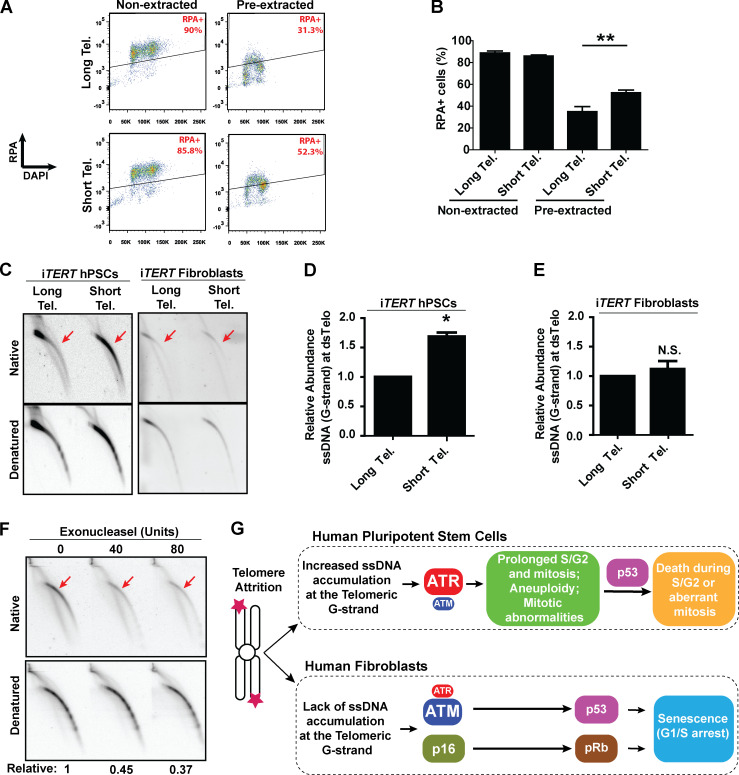Figure 5.
ssDNA accumulates at telomeric G-strand (overhang) of hPSCs with short telomeres (Tel.). (A and B) Detection of chromatin-bound RPA by flow cytometry in iTERT hPSCs. Illustrative images are shown in A, and average ± SD of three independent experiments shown in B. Statistical analysis: paired t test; **, P < 0.01. (C–E) G-overhang detection in iTERT hPSCs and iTERT fibroblasts by 2D gel analysis. A representative image is shown in C, and quantification of three independent experiments (average ± SD; *, P < 0.05) is shown in D and E. (D and E) PDLs for cells with short telomeres: 149–159 (iTERT hPSCs), 45–47 (iTERT fibroblasts). N.S., not significant. (F) Exonuclease I–mediated degradation of Telomeric ssDNA in iTERT hPSCs with short telomeres. Units of enzyme are shown on top; relative indicates native/denatured signal. (G) Model: Telomere attrition in hPSCs leads to accumulation of ssDNA at telomeric overhangs and an ATR-mediated response that results in prolonged S/G2 and mitosis, mitotic abnormalities, and death. In fibroblasts, ATM has a dominant role in the activation of p53 upon telomere attrition and, together with p16/pRb, induces senescence.

